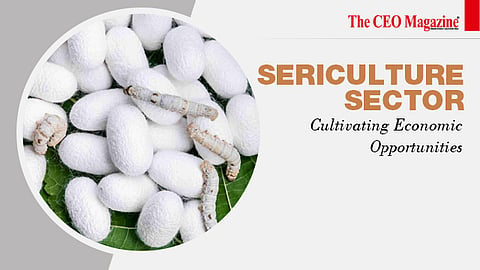

Sericulture Sector
Cultivating Economic Opportunities
The sericulture sector is the production of silk through the rearing of silkworms. Sericulture is a vital industry that has provided economic opportunities to people worldwide.
Silk is used in various industries, from fashion to medical textiles. The sericulture sector is not only beneficial to the economy but also promotes sustainable practices.
The history of sericulture dates back to ancient China. The Chinese kept the process of silk production a secret for many years. Eventually, the knowledge of sericulture spread to other parts of the world, and today, many countries produce silk.
The sericulture process begins with the cultivation of mulberry leaves, which are the primary food for silkworms. Silkworms are then reared, and fed mulberry leaves until they spin their cocoons. The cocoons are harvested, and the silk fibres are extracted and woven into various textiles.
The sericulture sector provides economic benefits to countries worldwide. It is a labour-intensive industry that employs many people. In addition, silk production generates significant revenue from exports, making it an essential source of foreign exchange.
Sericulture is a sustainable practice that promotes environmental conservation. Mulberry trees used to feed silkworms are also beneficial to the environment. They provide shade, prevent soil erosion, and absorb carbon dioxide, a greenhouse gas.
Despite the many benefits of the sericulture sector, there are still challenges that need to be addressed. One major challenge is the increasing demand for silk, which has led to the overuse of resources and the exploitation of workers.
Additionally, climate change has affected silk production by altering weather patterns, causing unpredictable silkworm-rearing cycles.
The sericulture sector is an essential industry that provides economic opportunities and promotes sustainable practices. It is a valuable source of revenue for countries and plays a crucial role in international trade.
However, there is a need to address the challenges facing the sericulture sector to ensure that it remains sustainable and beneficial to all stakeholders.
Follow us on Google News
